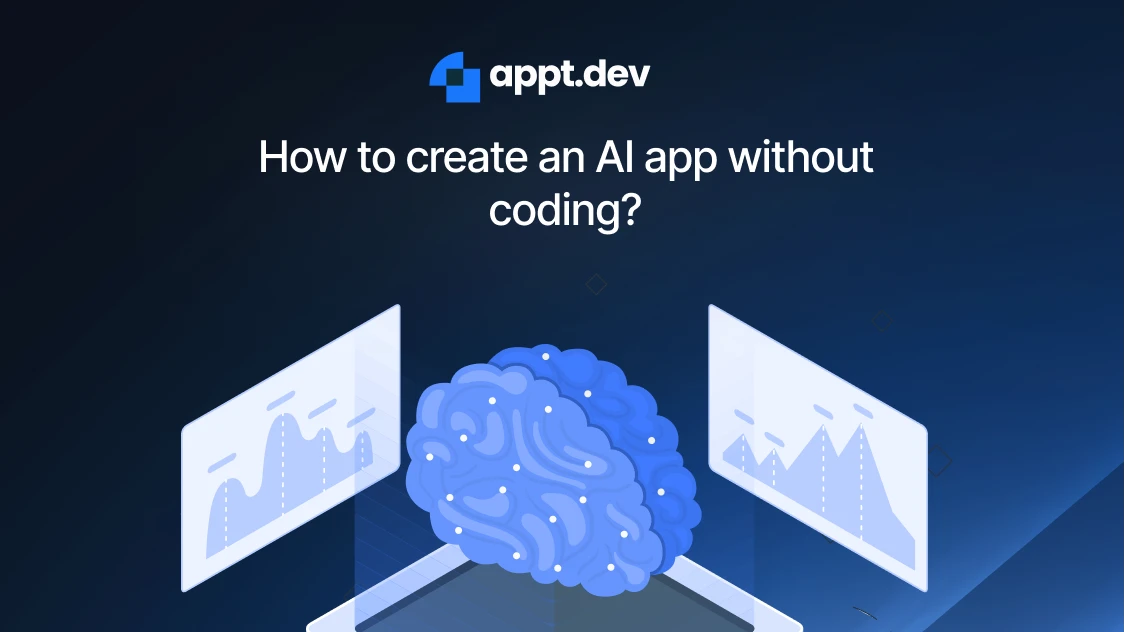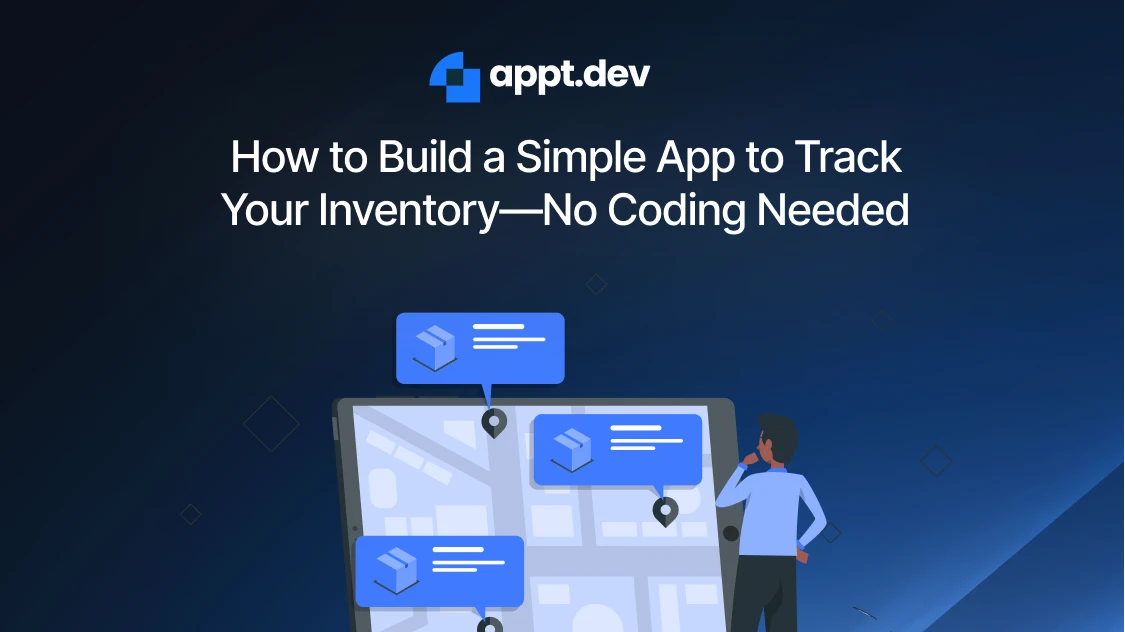The Complete Guide to Low-Code Development
Low-code

Shaik Moosa
November 29, 2024 | 5 min
Share to
What is Low-Code Development?
Low-code development is a streamlined approach to software development where applications are built using visual models and drag-and-drop interfaces instead of extensive coding. Designed to accelerate the application lifecycle, low-code platforms empower users with varying technical expertise to create applications and automate workflows effectively.
Low-Code vs. No-Code: Key Differences
While both low-code and no-code platforms simplify application development, they cater to different user groups:
Low-Code: Aimed at developers and tech-savvy users, low-code allows more customization and flexibility through limited coding. Ideal for complex projects. No-Code: Best for business users with no technical expertise, no-code platforms offer pre-configured templates but limit customization.
Core Benefits of Low-Code Development
The advantages of low-code platforms make them an essential tool for organizations seeking rapid digital transformation. Here’s how ApptDev’s low-code platform can accelerate your journey:
- Accelerated Development Time: With visual tools, applications can be built in a fraction of the time it takes with traditional coding, minimizing time-to-market.
- Enhanced Agility: Respond to business changes instantly, making low-code ideal for iterative development and fast-paced innovation.
- Reduced IT Dependency: Empowering citizen developers to build applications reduces the pressure on IT teams and allows them to focus on critical tasks.
- Cost-Effective Scaling: Low-code lowers development costs, enabling teams to launch high-impact applications without the need for extensive resources.
Key Features of ApptDev’s Low-Code Platform
ApptDev’s platform delivers robust tools and intuitive design elements that support businesses in developing customized applications. With a focus on user experience and functionality, ApptDev empowers teams to build applications quickly and deploy confidently. Here are some standout features:
Schema Builder: Enables users to design and manage data structures effortlessly.
- UI Designer: A drag-and-drop interface that allows the creation of visually engaging and user-friendly applications.
- AI-Driven Automation: Automate workflows and tasks with AI, boosting operational efficiency and reducing manual effort.
- One-Click Deployment: Streamline your application’s release with seamless, one-click deployment.
- Extensive Integrations: Connect with existing systems and applications, ensuring data consistency and enhancing interoperability.
Use Cases Across Industries
Low-code development has applications across industries, from small startups to large enterprises. Here’s how ApptDev’s platform supports various sectors:
- Finance: Automate loan processing, customer onboarding, and compliance workflows.
- Healthcare: Streamline patient data management and enhance operational efficiency.
- Manufacturing: Improve production workflows, monitor equipment performance, and optimize supply chains.
- Retail: Enhance customer experience through personalized, data-driven applications.
ApptDev’s Approach to Low-Code Development: Define, Develop, Deploy
ApptDev emphasizes a structured yet agile approach to application development, built around three key pillars:
- Define: Establish a solid infrastructure and clarify requirements to set the foundation for app development.
- Develop: Use ApptDev’s schema builder, UI designer, and flow designer to build applications rapidly and collaboratively.
- Deploy: With a streamlined deployment process, you can launch applications with confidence, ensuring scalability and reliability.
Why ApptDev for Low-Code Development?
ApptDev’s low-code platform combines user-friendly design with powerful functionality, making it an ideal choice for businesses seeking flexibility, scalability, and efficiency. Our platform’s AI-powered tools and integration capabilities equip organizations to innovate and respond to change swiftly. Whether you’re a product manager, solopreneur, or part of an enterprise IT team, ApptDev enables you to build applications that drive measurable impact.
The Future of Low-Code: Empowering Continuous Innovation
Low-code is more than a trend—it’s the future of application development. ApptDev’s platform empowers organizations to stay agile, innovate continuously, and maintain a competitive edge. By streamlining workflows, enhancing team collaboration, and simplifying complex development tasks, ApptDev is helping organizations turn ideas into impactful applications.
Low-Code vs. No-Code: Choosing the Right Tool
While both platforms simplify app development, they cater to different audiences:
| Aspect | Low-Code | No-Code |
|---|---|---|
| Target Users | Developers, IT teams, tech-savvy business users | Business analysts, non-technical stakeholders |
| Customization | High (supports custom code for complex logic) | Limited (template-driven with minimal tweaks) |
| Use Case Complexity | Enterprise apps (ERP, IoT, AI integrations) | Simple workflows (forms, surveys, basic apps) |
| Integration Depth | Advanced (APIs, legacy systems, DevOps tools) | Basic (pre-built connectors for popular apps) |
When to Choose Low-Code:
- Building mission-critical apps requiring custom logic or scalability.
- Integrating with legacy systems.
- Needing granular control over security.
When to Choose No-Code:
- Rapid prototyping for internal tools or MVPs.
- Empowering non-technical teams to automate workflows.
Core Benefits of Low-Code Development
1. Accelerated Time-to-Market
Low-code slashes development cycles by 60–90%.
- Reusable Components: Pre-built modules for login, payment processing, and push notifications.
- Collaborative Workflows: Developers and designers work simultaneously on the same platform.
2. Reduced IT Dependency
With citizen developers (non-IT staff) building apps, IT teams focus on strategic tasks. A healthcare provider trained nurses to build patient scheduling apps, reducing IT backlog by 40%.
3. Cost Efficiency
- Lower Development Costs: No need to hire specialized developers for simple apps.
- Reduced Maintenance: Cloud-based platforms handle updates and security patches.
4. Enhanced Agility
- Iterative Development: Test features in real-time and pivot based on feedback.
- Scalability: Start with an MVP and scale as user demand grows.
5. Future-Proof Innovation
- AI/ML Integration: Add smart features without data science expertise.
- IoT Readiness: Build apps to manage smart devices in manufacturing or logistics.
Key Features of Leading Low-Code Platforms
ApptDev’s platform exemplifies the capabilities of modern low-code tools:
1. Visual Development Environment
- Drag-and-Drop UI Designer: Create pixel-perfect interfaces for web and mobile.
- Workflow Automation: Design approval chains, notifications, and data pipelines.
2. Enterprise-Grade Security
- Role-Based Access Control (RBAC): Define permissions for users, teams, or external partners.
- Data Encryption: Secure sensitive data at rest and in transit.
- Audit Logs: Track changes for compliance (SOC 2, GDPR).
3. AI-Powered Automation
- Smart Process Automation (SPA): Automate invoice processing, document classification, or customer support.
- Predictive Analytics: Embed ML models to forecast sales or equipment failures.
4. Cross-Platform Compatibility
- Single-Codebase Apps: Deploy to iOS, Android, and web with one build.
- Responsive Design: Apps adapt to any screen size automatically.
5. Scalability
- Cloud-Native Architecture: Auto-scale resources during traffic spikes.
- Microservices Support: Break apps into modular components for easier updates.
Use Cases Across Industries
Discover how low-code platforms are revolutionizing various sectors by streamlining workflows, enhancing customer experiences, and accelerating innovation.
Finance
- Automated Workflows: Develop apps for loan processing, fraud detection, and customer onboarding.
- Regulatory Compliance: Integrate with existing systems for accurate compliance reporting.
- Real-Time Analytics: Use customizable dashboards to monitor risk and operational performance.
- Agility: Rapidly update systems to meet new financial regulations and market trends.
Healthcare
- Patient Data Management: Streamline electronic health records and integrate patient information across departments.
- Appointment Scheduling & Telemedicine: Enhance patient access to care with automated booking and virtual consultations.
- Administrative Efficiency: Automate tasks like insurance claims processing.
- Remote Monitoring: Deploy mobile apps for real-time patient monitoring and improved engagement.
Manufacturing
- Production Scheduling: Create applications to monitor assembly lines and production processes.
- Inventory Management: Automate stock tracking to reduce downtime.
- Equipment Maintenance: Predict and schedule maintenance to prevent breakdowns.
- Supply Chain Integration: Unify data from multiple sources for a holistic view of production.
Retail
- Customer Experience: Build apps for personalized recommendations and loyalty programs.
- Omni-Channel Integration: Connect POS systems with online platforms for a seamless shopping experience.
- Inventory Automation: Monitor stock levels in real time to prevent shortages.
- Targeted Marketing: Use integrated customer data for precision marketing campaigns.
Education
- Student Management: Develop systems for enrollment, attendance, and grading.
- Online Learning Platforms: Create interactive portals with multimedia content and assessments.
- Data Integration: Seamlessly connect with existing campus systems.
- Engagement Tools: Enhance communication between students and educators.
Real Estate
- Property Management: Custom systems for listings and client tracking.
- Lead Tracking: Automate property viewings and follow-ups.
- CRM Integration: Improve client management and communication.
- Market Insights: Use external data for property valuations.
Human Resources
- Recruitment Automation: Automate candidate tracking and onboarding.
- Performance Management: Tools for real-time employee evaluations.
- Workflow Efficiency: Reduce administrative tasks for strategic HR initiatives.
- Compliance: Ensure adherence to labor regulations.
Insurance
- Claims Processing: Automate the claims lifecycle.
- Policy Management: Tools for renewals and updates.
- Risk Assessment: Use external data for accurate risk evaluations.
- Customer Portals: Provide easy access to policy details.
Transportation and Logistics
- Route Optimization: Real-time planning with GPS and traffic data.
- Fleet Management: Manage maintenance and driver assignments.
- Shipment Tracking: End-to-end visibility for logistics.
- Cost Reduction: Automate to reduce operational expenses.
Telecommunications
- Customer Service Automation: Self-service portals for troubleshooting and billing.
- Network Monitoring: Real-time monitoring to resolve outages.
- Billing Systems: Streamline subscription management.
- Feature Updates: Quickly deploy new functionalities.
Energy and Utilities
- Smart Grid Management: Monitor energy usage and supply.
- Customer Engagement: Automate bills and outage notifications.
- Sustainability Tracking: Monitor carbon footprints.
- Regulatory Adaptation: Adjust to changing regulations.
Non-Profit Organizations
- Donor Management: Track donations and personalized communications.
- Volunteer Coordination: Streamline scheduling and communication.
- Fundraising Platforms: Support fundraising activities.
- Operational Efficiency: Focus on mission-critical work.
Government
- Service Delivery: Simplify permit and service request processes.
- Transparency: Provide updates on public service applications.
- Internal Workflows: Automate document management.
- Agility: Quickly adapt to new policies.
Travel and Hospitality
- Booking Systems: User-friendly apps for reservations.
- Guest Management: Streamline check-in/check-out processes.
- Feedback Integration: Collect and act on guest feedback.
- Operational Efficiency: Optimize back-end processes.
Agriculture
- Crop Monitoring: Track soil data with IoT sensors.
- Resource Management: Optimize irrigation and fertilization.
- Supply Chain Tracking: Manage produce journeys from farm to market.
- Customization: Tailor applications for regional farming practices.
Media and Entertainment
- Content Management: Manage scheduling, assets, and engagement.
- Streaming Applications: Build customizable platforms for video and live events.
- Audience Analytics: Leverage real-time data for content and advertising.
- Interactive Experiences: Enhance digital engagement and monetization.
Automotive
- Inventory Tracking: Monitor parts inventory in real time.
- Customer Service: CRM systems for test drives, purchases, and after-sales support.
- Service Scheduling: Automate maintenance reminders and bookings.
- Market Responsiveness: Quickly update applications to reflect industry trends.
Construction
- Project Management: Track budgets, timelines, and resource allocation.
- Inventory Monitoring: Integrate with supply systems to manage material usage.
- Safety Compliance: Automate checklists and reporting to ensure regulatory adherence.
- Collaboration: Streamline communication between on-site teams and office staff.
Sports and Recreation
- Player Management: Develop systems for registrations, scheduling, and performance tracking.
- Team Coordination: Use real-time data to adjust training programs based on wearable technology.
- Membership Management: Automate event bookings and facility maintenance.
- Enhanced Engagement: Facilitate communication among coaches, players, and management.
Aerospace and Defense
- Project Tracking: Manage workflows, training schedules, and compliance reporting.
- Lifecycle Management: Monitor critical components and schedule maintenance proactively.
- Secure Applications: Build systems to handle classified information and coordinate training.
- Regulatory Adaptation: Quickly adjust systems to meet new security and industry standards.
Pharmaceuticals
- Clinical Trials Management: Track trial progress and generate compliance reports.
- Regulatory Submissions: Automate data collection and document creation for regulatory bodies.
- Supply Chain Monitoring: Ensure quality control in manufacturing and distribution.
- Faster Time-to-Market: Streamline processes to reduce delays in drug development.
E-commerce
- Custom Shopping Platforms: Build personalized mobile apps with streamlined checkouts.
- Inventory Integration: Manage product listings and order fulfillment in real time.
- Promotional Features: Quickly deploy flash sales, loyalty programs, and targeted campaigns.
- Agility: Adapt to market trends with rapid feature updates.
Marketing and Advertising
- Campaign Management: Create tools for tracking and optimizing marketing campaigns.
- Real-Time Analytics: Integrate data from multiple channels for actionable insights.
- Client Dashboards: Build interactive dashboards to showcase performance metrics.
- Data-Driven Decisions: Leverage rapid feedback to adjust strategies on the fly.
Cybersecurity
- Threat Detection: Integrate data from multiple security tools for comprehensive monitoring.
- Incident Response: Automate workflows for efficient response to cyber threats.
- Compliance Automation: Build checklists and audit trails to meet industry standards.
- Proactive Defense: Reduce manual tasks to focus on strategic security initiatives.
Blockchain
- Decentralized Applications (dApps): Simplify the creation of blockchain-based systems.
- Wallet Solutions: Develop secure applications for digital currency transactions.
- Smart Contracts: Enable rapid prototyping and deployment of automated contracts.
- Flexibility: Experiment with decentralized finance (DeFi) models with minimal resources.
Environmental Services
- Real-Time Monitoring: Integrate sensor data to track air and water quality.
- Compliance Reporting: Automate the generation of environmental compliance reports.
- Waste Management: Optimize recycling processes and track waste streams.
- Sustainability Initiatives: Support tools that monitor carbon footprints and efficiency measures.
Professional Services
- Project Management: Streamline workflows and monitor project milestones with custom apps.
- Client Engagement: Use real-time analytics to provide data-driven insights.
- Resource Allocation: Track budgets and timelines efficiently.
- Enhanced Reporting: Integrate with enterprise systems for comprehensive performance metrics.
Fashion and Apparel
- Inventory Optimization: Manage stock levels and prevent overproduction.
- Customer Engagement: Build mobile apps with personalized style recommendations.
- Virtual Fitting Rooms: Leverage AR for an enhanced online shopping experience.
- Dynamic Catalogs: Support seasonal promotions and interactive customer features.
Mining and Natural Resources
- Safety Monitoring: Track machinery performance and enforce safety protocols.
- Resource Tracking: Monitor extraction processes and manage supply chains.
- Regulatory Compliance: Automate safety and environmental reporting.
- Operational Efficiency: Quickly update systems to reduce waste and improve performance.
Food and Beverage
- Quality Control: Track ingredient sourcing and monitor production processes.
- Inventory Management: Automate stock monitoring and quality assurance tasks.
- Order Management: Build customer-facing apps for order tracking and feedback.
- Supply Chain Integration: Ensure freshness and compliance throughout the production cycle.
Hospitality
- Reservation Systems: Develop comprehensive apps for hotel and restaurant bookings.
- Guest Management: Streamline check-in/check-out and service request processes.
- Real-Time Updates: Integrate with housekeeping and maintenance schedules.
- Personalized Service: Quickly adapt systems to meet unique guest requirements.
Insurance Technology (Insurtech)
- Innovative Products: Rapidly prototype customizable insurance products.
- Automated Underwriting: Integrate data analytics for precise risk assessments.
- Custom Policy Management: Develop tools to handle policy changes and renewals.
- Agile Development: Experiment with new pricing models and customer engagement strategies.
Security Services
- Incident Reporting: Automate the creation and management of incident logs.
- Staff Scheduling: Streamline team assignments and patrol scheduling.
- Performance Tracking: Monitor security personnel and integrate with surveillance systems.
- Compliance: Build checklists and reporting tools to ensure quality control.
Fashion Retail
- Virtual Fitting: Use augmented reality to enable virtual try-ons.
- Style Recommendations: Leverage data to offer personalized shopping experiences.
- Inventory Sync: Integrate real-time product availability with customer-facing apps.
- Agility: Rapidly update features to respond to evolving fashion trends.
Fitness and Wellness
- Membership Management: Create custom systems for scheduling classes and tracking memberships.
- Personalized Workouts: Integrate wearable data for customized training recommendations.
- Class Booking: Automate scheduling and manage reservations efficiently.
- Engagement Tools: Provide nutrition and fitness tracking through integrated mobile apps.
Event Management
- Registration & Ticketing: Build online systems for event sign-ups and ticket purchases.
- Attendee Tracking: Monitor participation and manage real-time updates.
- Feedback Collection: Automate post-event surveys and data analysis.
- Seamless Coordination: Streamline scheduling and communication between event teams.
Telecommunications Management
- Service Requests: Consolidate customer inquiries, billing issues, and support tickets.
- Network Dashboards: Integrate real-time monitoring for network performance.
- Self-Service Portals: Develop tools for automated troubleshooting and account management.
- Rapid Updates: Quickly deploy new features to enhance customer satisfaction.
Chemical Manufacturing
- Process Monitoring: Track chemical reactions and production processes in real time.
- Hazardous Materials Management: Automate inventory tracking and compliance reporting.
- Quality Assurance: Integrate safety protocols and generate regulatory reports.
- Adaptability: Update systems swiftly to comply with industry standards.
Interior Design
- Project Management: Develop systems for tracking timelines, budgets, and client feedback.
- Collaboration Portals: Facilitate communication between designers, suppliers, and clients.
- Procurement Tracking: Monitor material orders and vendor performance.
- Customization: Tailor apps to reflect unique design aesthetics and workflows.
Digital Advertising
- Campaign Dashboards: Aggregate data from multiple ad networks for a unified view.
- Real-Time Analytics: Monitor performance metrics and adjust strategies on the fly.
- Interactive Reporting: Build custom dashboards for client presentations.
- Budget Optimization: Leverage data insights to fine-tune ad spend allocation.
Construction Equipment Rental
- Inventory Tracking: Monitor equipment usage with real-time data and sensor integration.
- Maintenance Scheduling: Automate maintenance reminders to prevent downtime.
- Billing Automation: Streamline invoicing and generate detailed rental reports.
- Operational Flexibility: Quickly adapt to market demands with customized applications.
Transportation Services
- Route Optimization: Integrate mapping and traffic data for efficient routing.
- Public Transit Apps: Provide live updates on schedules, delays, and service changes.
- Freight Tracking: Enable real-time shipment monitoring and automated scheduling.
- Customer Communication: Enhance transparency and service efficiency across transportation services.
Public Relations
- Media Contact Management: Centralize databases for efficient outreach.
- Press Release Distribution: Schedule and automate the delivery of press materials.
- Campaign Monitoring: Use integrated social media and sentiment analysis tools.
- Data-Driven Adjustments: Quickly refine strategies based on real-time performance insights.
Non-Governmental Organizations (NGOs)
- Grant Management: Automate the process of managing applications and reporting impacts.
- Volunteer Coordination: Simplify scheduling and track volunteer hours.
- Fundraising Tools: Build platforms to support donations and community engagement.
- Resource Optimization: Reduce administrative overhead to focus on mission-critical activities.
Social Media Management
- Content Scheduling: Create custom tools for planning and automating posts.
- Analytics Integration: Consolidate data from multiple platforms for unified reporting.
- Engagement Monitoring: Track audience behavior and adjust campaigns in real time.
- Rapid Campaign Adjustments: Leverage low-code to quickly modify content based on performance data.
Online Learning Platforms
- Learning Management Systems (LMS): Develop interactive, multimedia-rich educational portals.
- Integrated Communication: Connect with video conferencing and real-time feedback tools.
- Student Data Integration: Seamlessly link with existing student information systems.
- Scalability: Rapidly expand offerings while maintaining high-quality educational experiences.
Trade and Export
- Documentation Automation: Streamline the creation and submission of export documents.
- Compliance Management: Ensure adherence to international regulations.
- Shipment Tracking: Provide real-time updates on international shipments.
- Efficiency: Reduce errors and administrative overhead for global trade operations.
Data Analytics
- Custom Dashboards: Build tailored analytics platforms for specific business needs.
- Data Integration: Consolidate data from various sources for deeper insights.
- Predictive Analytics: Leverage machine learning models to forecast business trends.
- Report Automation: Streamline reporting and automate data visualizations for stakeholders.
Staffing and Recruitment
- Candidate Tracking: Automate the sourcing, tracking, and updating of candidate profiles.
- Interview Scheduling: Simplify the process of arranging interviews.
- Onboarding Tools: Streamline the onboarding process for new hires.
- Performance Analytics: Monitor recruitment metrics such as time-to-hire and conversion rates.
Creative Services
- Project Management: Build custom systems to track creative projects, deadlines, and resources.
- Client Collaboration: Facilitate seamless feedback loops between creative teams and clients.
- File Sharing & Updates: Integrate with creative tools for real-time project tracking.
- Efficiency: Automate administrative tasks to focus on delivering high-quality creative work.
Overcoming Low-Code Challenges
1. Governance and Shadow IT
- Risk: Citizen developers may create unsecured apps.
- Solution: Implement centralized governance with IT oversight.
2. Scalability Limits
- Risk: Apps may struggle under heavy workloads.
- Solution: Choose platforms with cloud-native architectures (AWS, Azure).
3. Vendor Lock-In
- Risk: Difficulty migrating apps to another platform.
- Solution: Opt for open standards (REST APIs, SQL databases).
The Future of Low-Code Development
- AI-Driven Development: Platforms will auto-generate code or suggest optimizations.
- Low-Code for DevOps: Automate CI/CD pipelines and infrastructure management.
- Democratized AI: Business users will train ML models via drag-and-drop interfaces.
- Metaverse Integration: Build AR/VR apps for virtual workplaces or customer experiences.
Why ApptDev Stands Out
- Hybrid Flexibility: Extend apps with custom code (Java, Python) when needed.
- Enterprise-Ready: Supports multi-cloud deployments and legacy system integration.
- Community & Support: Access to forums, templates, and 24/7 technical assistance.
Conclusion: Embrace the Low-Code Revolution
Low-code development is no longer a niche trend—it’s a strategic imperative. Platforms like ApptDev empower organizations to innovate faster, reduce costs, and stay ahead of competitors. Whether you’re automating workflows, building customer-facing apps, or integrating AI, low-code provides the tools to turn ideas into reality.
Ready to transform your business? Start your low-code journey with ApptDev today and unlock the full potential of agile development.
Get started today at ApptDev
FAQs
Related Blogs

Can you really build an app with no-code?
In a world where digital transformation is no longer optional, the ability to create custom applications quickly has become a competitive advantage.
Read More
How to create an AI app without coding?
In today's rapidly evolving technological landscape, artificial intelligence has transformed from an exclusive domain of specialized developers to an accessible tool for businesses and individuals alike.
Read More
How to Build a Simple App to Track Your Inventory—No Coding Needed
Here’s a concise guide to building a custom inventory-tracking app on ApptDev—no coding required. You’ll learn why inventory management matters, how ApptDev’s visual tools streamline every step, and key insights to maximize efficiency. By following our six-step walkthrough, you’ll go from blank canvas to deployed app in under an hour, complete with automated reorder alerts and mobile-ready interfaces.
Read More